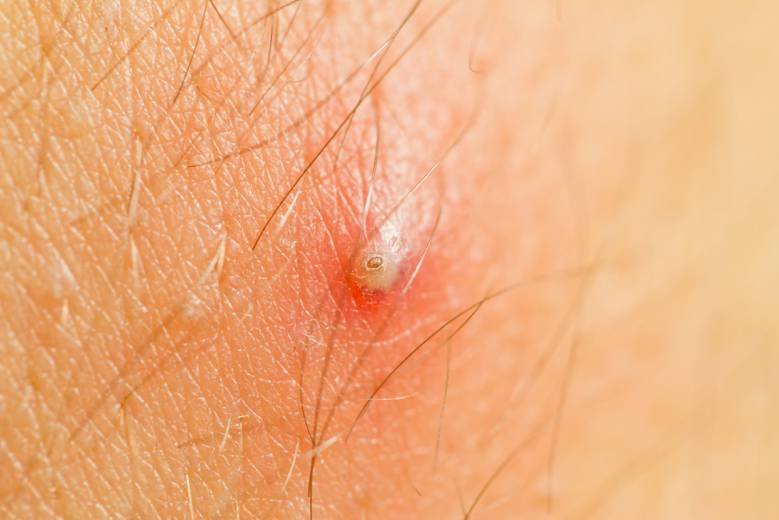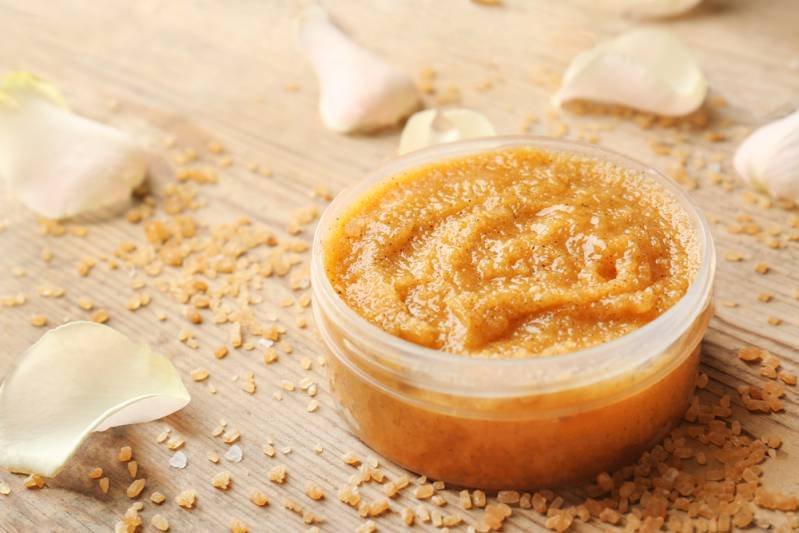
You will experience ingrown hair when the hair grows sideways under the skin, or curl and grows back into your skin. This can result in a bump ranging from the minor spot a bigger cyst. This bump can emerge on the chin, face, thigh, pubic area, scalp, neck, legs among other areas. This insightful article will explore in-depth details about ingrown hair bump.
Have you ended bumps on your face, chin, neck, thigh, and armpit etc. which is not acne, a hive or an insect bite? Maybe, this could be an ingrown hair bump. It would result due to some factors.

The good thing is that this is not a serious issue. It can be dealt with efficiently, but in some cases when infections strike it, it can have severe symptoms as well as cause effects such as skin darkening and scars after it heals.
Typically, it occurs if the follicles are blocked, and the hair instead grows sideways. It can also happen when naturally curling hair is cut short and thus the sharp edges pierce back into the skin. Many reasons can make it emerge but before we proceed further, how does it look like or what are some of its symptoms?
Once you develop an ingrown hair, it would irritate the skin leading to the formation of the raised red bump. The red bumps can also occur in the cluster or alone. At times, you can end up with a painful sore resembling a boil.

These bumps can also be very itchy and thus very distressing. The bumps may be filled with pus or surrounded with red skin. They can sometimes bleed if irritated. Usually, they begin as small pimple like bumps that later grow too much larger bumps called ingrown hair cyst. According to healthline.com, “The resulting cyst can be red, white, or yellow in color. It may also be painful to the touch.”
Again, we should get this all together. Ingrown hair cyst is far apart from acne cysts. Though they may look alike, their formation is very different.
Anyone can have these bump. In men, they tend to be common on chin, cheeks, and neck. On the other hand, women commonly develop them in pubic area and armpits.
More importantly, you should note that this usually occurs majorly after poor shaving techniques. In summary, here is how ti can manifest itself:
The bump is formed when one has an ingrown hair, right? I guess whatever causes the latter can lead to a bump and it can affect any part of the body that has hair follicles.
Although anyone can have this problem, some people are more vulnerable than others. Let us now focus on why some people are more vulnerable than others or otherwise the various causes.
If you have very curly hair, then you are at higher risk of getting an ingrown hair. According to webmd.com, “Curly hair is more likely to bend back and re-enter the skin, especially after it’s been shaved or cut.” We, therefore, advise you to adapt to proper shaving techniques, this would at least limit chances of having this problem if you have naturally curly hair.
The body biology of various people does vary. Certain people tend to have a higher amount of some sex hormones. Medical studies reveal that, if the levels of certain sex hormones rise, one may experience excessive hair growth. This would increase the chances of getting this problem more than ever after shaving.
When the hair follicles are blocked by dead skin cells and sebum, it will grow sideways. So in this case, the bump will be an acne one. In short, various forms of acne can lead this problem.
Things are thus complicated now! You see there is a wide range of acne triggers. So one of the ways to prevent it is also to avoid the occurrence of acne. These could include hormonal acne treatments, dietary changes, antibiotics, steroid injections and many other treatments. The treatments can be oral, topical or via injections.
Do genes play any role? Of course yes. Myhealthyfeeling.com confirms that “Genes also play a role in the occurrence of ingrown hair.” If parents or very close relative had natural curly or coarse hair. You can also have the same and thus equally vulnerable to this problem.
Improper shaving techniques also greatly contribute ingrown hairs that later develop into bumps. Shaving too short or in the wrong direction can result in this problem Again, improper tweezing, waxing or application of depilatory products can also trigger it.
Shave the right direction and not too short. You should as well seek advice from your dermatologist about the best ways to wax or tweeze.
Any injury to the skin can trigger this problem i.e. certain injuries that lead to the formation of scabs or crusts can make it hard for growing hair to penetrate through and hence it will be ingrown.
Skin injuries can be traumatic or result from skin rashes or blemishes. Again certain levels of friction can also make straight hairs to be curly and thus increasing the vulnerability of developing this problem.
Now, we have learned that numerous conditions that can trigger this problem. Although it is not a serious skin condition, severe cases could result especially when cases of infected ingrown hair emerge. Treating the earlier symptoms is hence very crucial.
In various circumstances, ingrown hair is usually referred to as razor bump. It is not clear why the two are deemed the same, but to us, the two terms mean different things. The former can result from various causes including shaving. However, razor bumps usually result in poor shaving techniques. When the hair is cut too short or in the wrong direction, razor bump will emerge. So to be more clear, razor bumps are the common type of ingrown hair bump.
Razor bumps are commonly seen on the chin, armpit, and pubic area and even in buttocks after shaving using a razor, and thus the name ‘razor bump.’ Symptoms of the two are the same.
Now, what helps razor bump? There are many remedies that can treat razor, read about to explore them.
It is true; we’ve all experienced them. Those itchy, painful minor or huge red bumps that ruin your complexion is not strange. Now, what is the best treatment? The treatment procedures include home remedies, over the counter products and prescribed treatments.
Let us go through the top home remedies.
This is is not that serious, simply DIY home remedies can easily remove them. So, before you proceed to those expensive commercial treatments, try the home remedies below:
Baking soda is among the best home products you can try. It has anti-inflammatory property, soothing effect and also relieves itchiness occurring alongside this problem. It also helps to exfoliate the skin and thus reduce chances of hair growing back into the skin that would consequently lead to a bump.

Sugar is known as a wonderful remedy too. It gets rid of dead skin cells and also exfoliate the skin gently and hence enabling the ingrown hair to come out. It will also make your skin to be very smooth.

Tea tree oil has great properties essential in dealing with this problem. It is antiseptic, antibacterial and anti-inflammatory natural product. It helps to heal the skin and would also prevent the infections that might strike in.

Apple cider vinegar is another great remedy for ingrown hair. It relieves the itchiness and the discomfort linked to this problem. It also keeps infections at bay. Though it can be harsh for very sensitive skin, it is worth to be given trial after being diluted.

There are many natural home products that can removal ingrown hair bumps and deal with related symptoms and effects such as scarring and skin pigmentation. In severe cases, the treatment would leap beyond home remedies. You may need to see your dermatologist.
Over the counter products, can also work well. OTC products include creams, lotions, gels, and soaps. Many of the counter products are applied topically. Some of the vital ingredients in these products can include benzoyl peroxide, salicylic acid and even the natural remedies discussed above.
The major downside with OTC products is that some of them are not genuine and may even contain toxins. You should, therefore, consult experts to have good selection during purchase.
This problem is usually not a persistent skin condition. More often, it heals on its own without any treatment. In rare cases, it can be severe to the extent that, home remedies and OTC products may be ineffective. Such scenarios need the intervention of your dermatologist.
Stronger medications would be required. You see, the bump may be infected leading to ingrown hair cyst. Stronger medications such as oral antibiotics, steroids, etc. can be applied. Even laser therapies would be prescribed for extremely severe conditions.
This bump can be treated with simple home remedies or even OTC products. The treatments are focused on unclogging the pores, relieving itching and inflammation as well as healing the damaged skin. To be safer, you should employ good grooming techniques such as proper shaving, waxing, and tweezing techniques.
You should exfoliate your skin regularly but gentle. This would make sure the dead skin cells are cleared, and thus the pores are not blocked. Also, avoid the triggers of acne that would lead to skin injuries and thus resulting in ingrown hair.